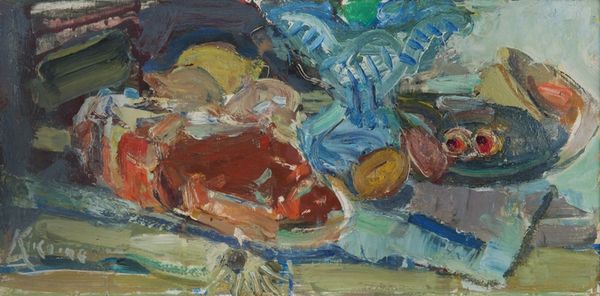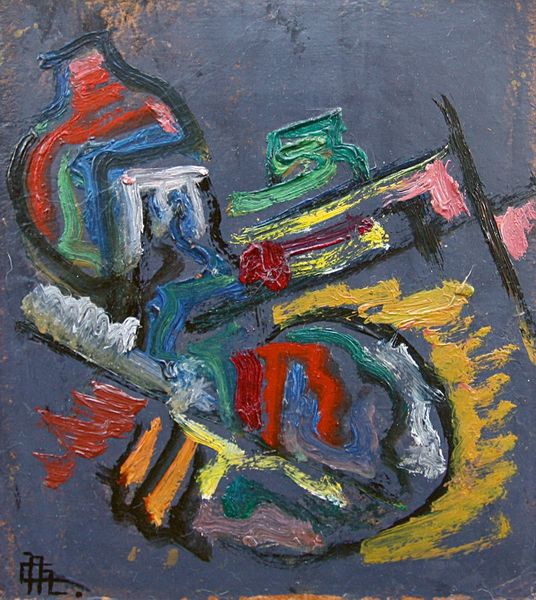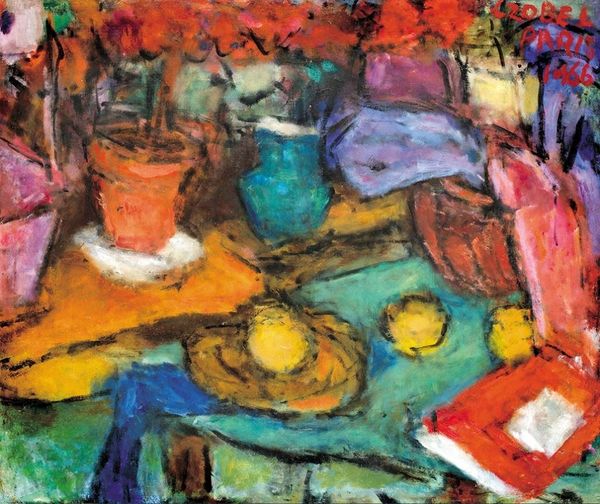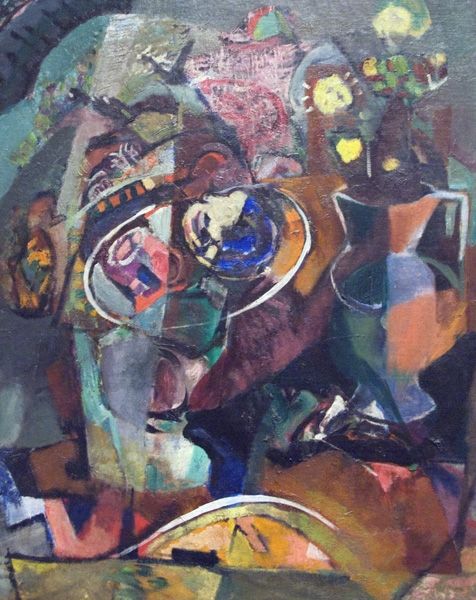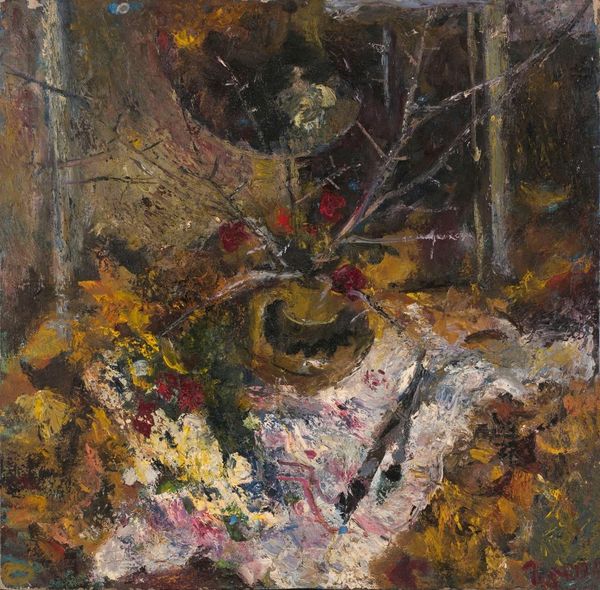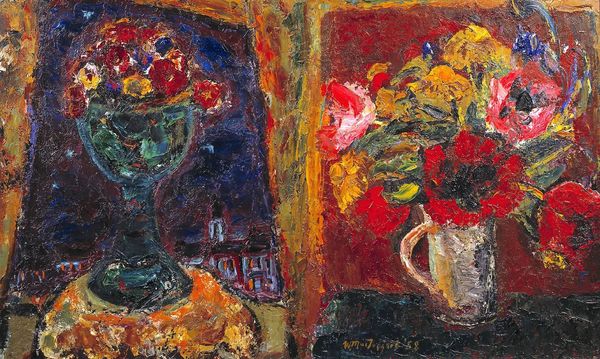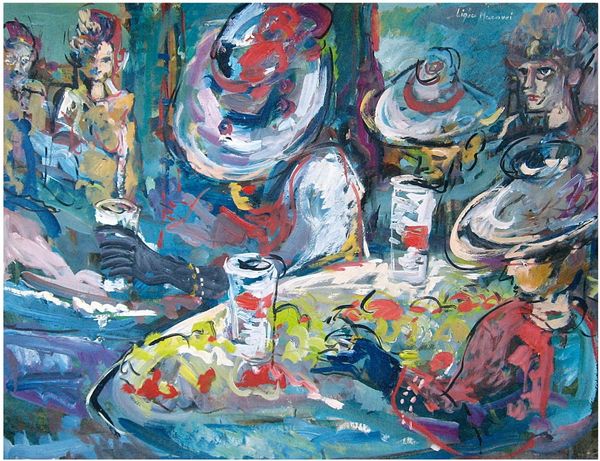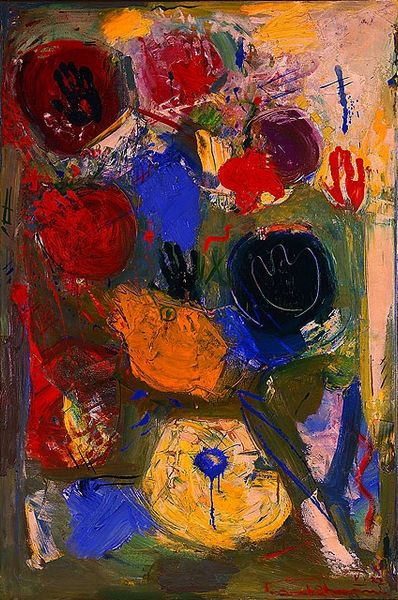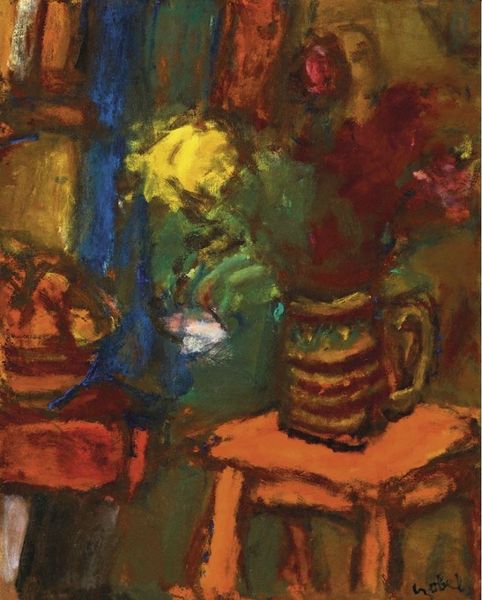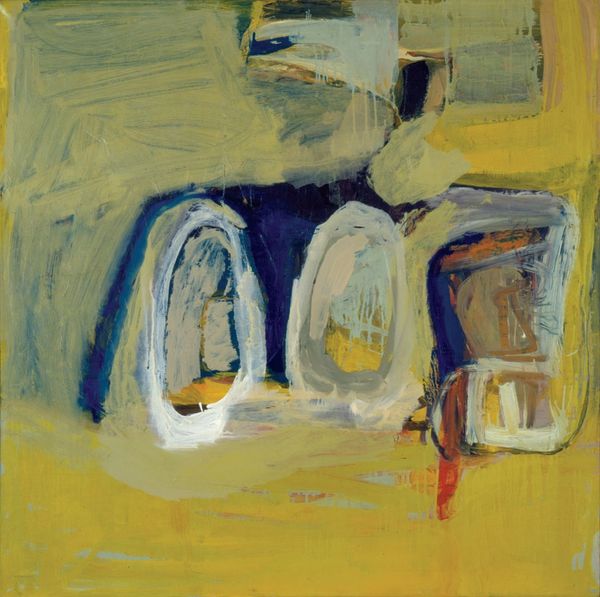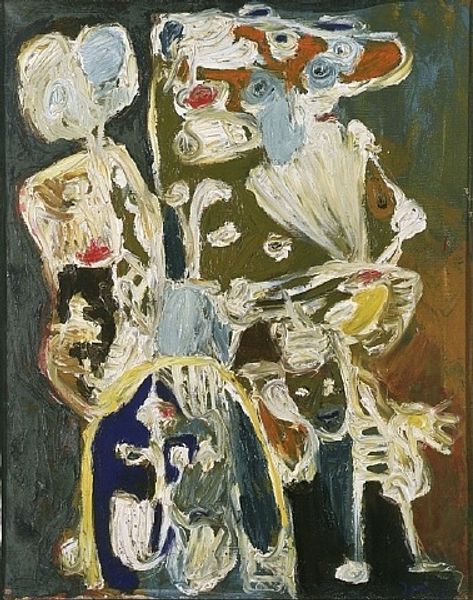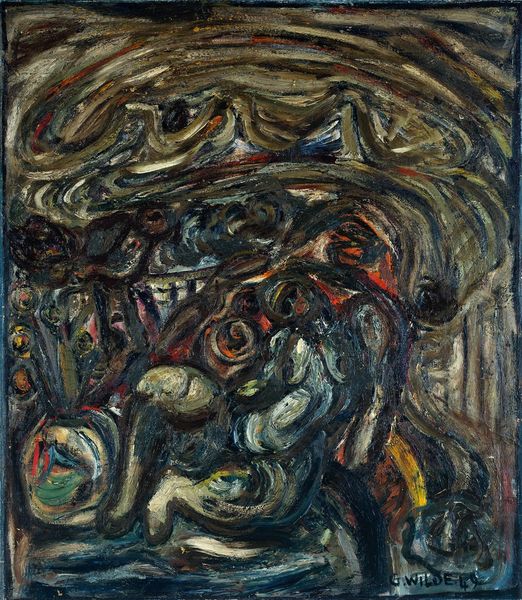
oil-paint, impasto
#
oil-paint
#
oil painting
#
impasto
#
post-impressionism
Copyright: Pinchus Kremegne,Fair Use
Curator: Pinchus Kremegne's "Stillife" radiates a kind of dreamy intimacy, doesn't it? What's your immediate impression? Editor: It feels… tactile. Almost aggressively so. The impasto technique – look at those globs of oil paint layered on. It’s all about the materiality of the paint itself. Curator: Absolutely, the impasto just sings. It gives the whole composition such a tangible, almost sculptural quality. I get a sense of abundance, a gentle, everyday opulence. You know, those intimate moments you find when really *seeing* an environment you’ve become desensitized to... a new bloom of creative vision arising from re-seeing things right under one’s nose. Editor: I see the tactile element but what strikes me more is how it democratizes the process. You can literally see the artist’s hand in it; the labor. With Post-Impressionism there’s that questioning of value—bringing what might have been considered ‘craft’ right into the art world. It’s less about idealized beauty and more about process, and Kremegne showcases that brazenly! Curator: Ah, that's insightful—the labour, the hand… there's a vulnerability in showcasing the process. Makes it somehow raw and unfiltered, yet the harmony still peeks through! Editor: And consider how the availability and quality of pigments were evolving. It affects how paintings like this came into existence. It is interesting to imagine what sorts of paintbrushes were used here, where exactly it may have been painted, how the work may have been commissioned. I imagine some of these elements remain unknown and forever intangible to us, and in that way the history feels forever tactile as well, something to grab on to yet eluding definite shape. Curator: In some ways, I am content knowing none of this as the dream lives and shapes the history that matters – and my creative soul expands. It all becomes an exploration and a personal experience... a connection across time with a consciousness beyond my own! Editor: It makes me reconsider the economics of artistic practice and the silent narratives of production that these still-lifes contain. Thanks!
Comments
No comments
Be the first to comment and join the conversation on the ultimate creative platform.
